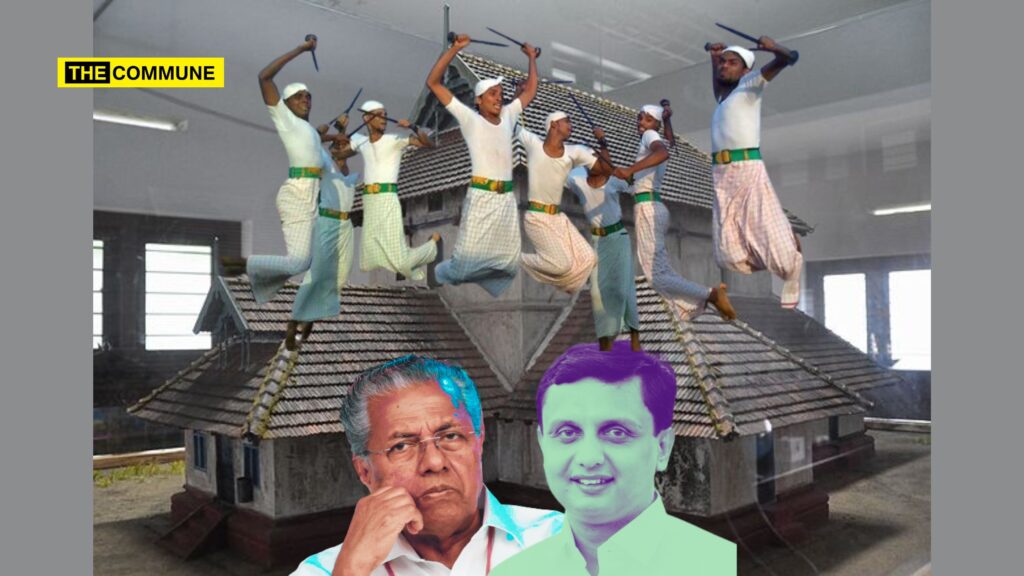P. A. Mohammed Riyas, son-in-law of Chief Minister Pinarayi Vijayan, and the Minister for Public Works & Tourism in Communist-ruled Kerala, is set to create a microsite on ‘Islam in Kerala’ with the aim of promoting tourism in the state, as reported by The Hindu.
The purpose of this microsite is to provide tourists with insights into the historical roots of Islam in Kerala, and for this digital production project, a budget of ₹93.8 lakh has been allocated. A senior official from Kerala Tourism emphasized the rich historical and cultural significance of Islam in Kerala, tracing its origins back to the 7th century. The digital production seeks to shed light on the early years of Islam in the region, covering topics such as mosques, architectural heritage, lifestyle, culture, art forms, and festivals.
Muhammad Riyas-led-Kerala Tourism to create a microsite on the roots of Islam in Kerala & allocated Rs. 93.8 lakhs for the same! They claim the Islamic history of Kerala dates back to 7th century, a myth fabricated around a Masjid which was actually built in 14th century.…
— J Nandakumar (@kumarnandaj) October 23, 2023
The aim of this project is to compile comprehensive information about the Islamic influence that has shaped Kerala over the centuries, with the goal of attracting religious scholars and historians to the state.
The Muslims of Kerala suffer from an identity crisis and this effort is clearly being made to show that Islam in Kerala and the Malabar coast is as old as Islam in Arabia.
Many say that this is nothing but an effort to promote Islam in Kerala using distorted history.
This effort may further solidify historically disputed claims, such as the Cheraman Mosque’s supposed dating back to the 7th century, which some consider a myth. As a result, concerns have arisen regarding the historical accuracy of the Kerala Tourism Minister’s microsite project, ‘Islam in Kerala.’
The proposed govt project seems to be aimed at establishing 3 myths as history:
— J Nandakumar (@kumarnandaj) October 23, 2023
1. Conversion of Cheraman Perumal.
2. Cheraman Masjid as 7th century structure.
3. Islam in Kerala is as old as Arabian Islam.
The microsite, titled ‘Islam in Kerala,’ will be structured into six chapters and intends to showcase it to both international and domestic tourists.
The first chapter will delve into the ‘History of Islam in Kerala,’ detailing how Islam established itself in Kerala through traders and their initial settlements along the Malabar coast.
In Chapter Two, the microsite will explore Islamic pilgrimage centers in the state, extending from Beemapally in Thiruvananthapuram to Juma Masjid in Kasaragod, featuring several ancient mosques that serve as pilgrimage destinations.
Chapter Three will focus on the culinary traditions of Muslims, particularly the Mappila cuisine, which is a fusion of Kerala, Persian, Yemeni, and Arabian culinary influences which is true.
The fourth chapter will highlight the community’s lifestyle, including attire worn during weddings and related ceremonies, with the aim of drawing tourists’ interest. However, this part can be contested as the attire worn during weddings and related ceremonies has now changed due to the influence of Arab culture which has now been inculcated by the Muslims in Kerala
Chapter Five will center on architecture, emphasizing the blend of Arabian traditions with indigenous construction techniques in Kerala, while the final chapter, Chapter Six, will explore the art forms and festivals of Muslims in Kerala, including the influence of Mappila songs, popular folklore that originated in the 16th century.
The initiative is in line with similar microsites created by Kerala Tourism on Christianity, Judaism, and temples in the state.
Regarding the historical background of the Cheraman Juma Mosque, there are differing accounts. Some myths claim it was built in the 7th century, but several scholars dispute this, suggesting a later date, possibly the 14th or 15th century, based on architectural style. According to the Cheraman Mosque’s website, Cheraman Perumal, the reigning King of Kerala with Kodungallur as its capital, converted to Islam towards the end of his life.
Before his passing, he wrote letters to local rulers in Malabar and entrusted them to his friends. When Malik Bin Dinar and his companions arrived in Kodungallur, they delivered the letters to the ruling chieftains, who granted permission to establish mosques in various places. The first mosque in India was constructed in Kodungallur, with Malik Bin Dinar serving as its first Ghazi.
The fact is in Kerala, Muslims claim that Cheraman Perumal converted to Islam before he died and Christians also make the claim that gives them historical veracity. Muslims say that Cheraman Perumal travelled to Mecca in 629 CE when Prophet Mohammad was alive and converted to Islam. At the same time, Christians claim Cheraman was very close to St. Thomas and had converted to Christianity and that he died in the house of St Thomas in Mylapore and not in Mecca.
Subscribe to our channels on Telegram and WhatsApp and get the best stories of the day delivered to you personally.

